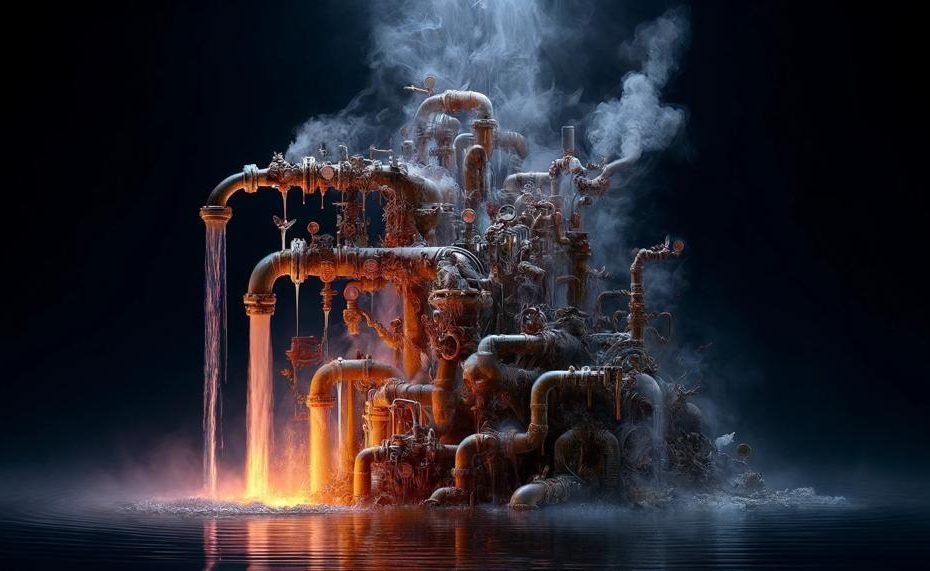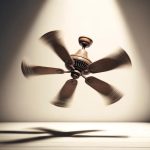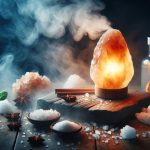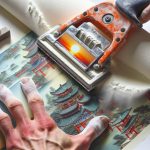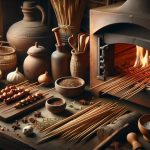Imagine getting ready for a refreshing shower when, all of a sudden, you’re hit with a blast of hot water when you were expecting cold.
Or maybe you notice that the cold side of your tap is getting warmer than it should be. What’s going on? This strange behavior isn’t just a small bother around the house; it’s a look into the interesting world of plumbing dynamics and fluid physics.
So, why Does hot water backflow into cold?
Hot water can backflow into cold water for a number of reasons, including:
- Expansion: When water is heated, it expands. If there is no open faucet or outlet to let the water expand, it will go back into the cold water supply.
- Faulty heating element: Old or burned out heating elements can cause hot water to go cold quickly.
- Sediment: Minerals can build up in the water tank and settle on the bottom, causing the tank to hold and heat less water.
- Malfunctioning thermostat: A malfunctioning thermostat can cause the immersion heater to overheat the water supply, resulting in hot water coming out of the hot water and cold water taps.
- Copper: Copper has strong conductive properties that can interfere with a cold-water supply. When hot water flows through a copper pipe, the material will store heat for a short while, making all cold water feel hot until the copper cools down.
- Incorrect heat trap installation: If the heat trap is not placed in the water heating inlet, hot water can infiltrate the cold water lines.
By the end of this exploration, you’ll not only grasp why this phenomenon occurs but also how to potentially mitigate its effects, keeping your water temperature just right.
Let’s unravel these fluid mysteries together.
Contents
Causes of Hot Water Backflow Into Cold
Hot water backflow into cold water lines is a puzzling issue that can disrupt the comfort of your home. To shed light on this matter, we delve into the causes and preventive measures in a manner that’s both accessible and insightful.
Key Causes:
- Faulty Check Valve: Acts as a gatekeeper, ensuring water flows in one direction only. If it malfunctions, hot water can sneak into cold lines.
- Misaligned Shutoff Valves: These regulate water flow. When not aligned correctly, they might permit hot water to merge with cold.
- High Water Pressure: This can overpower the system, pushing hot water into places it shouldn’t be.
- Elevated Temperature Settings: Higher than necessary settings on your water heater can cause pressure buildup, encouraging backflow.
Potential Dangers of Hot Water Backflow Into Cold
Hot water backflow into cold water systems in homes isn’t just a minor inconvenience; it’s a predicament that demands immediate attention.
This anomaly disrupts the intended operation of your water supply, leading to several risks and inconveniences.
Risks and Solutions Table
| Risk | Consequence | Solution |
| Water Temperature Inconsistency | Results in unpredictable water temperatures, which can lead to scalding or discomfort during use. | Install an expansion valve or cartridge to regulate pressure and temperature. |
| Increased Wear on Plumbing | Misalignment and pressure imbalances can accelerate wear on pipes and fixtures. | Repair or replace faulty valves and adjust water pressure settings. |
| Energy Inefficiency | Unnecessary heating of cold water lines wastes energy and increases utility bills. | Identify and fix the root cause, whether it’s a faulty valve or high water pressure. |
Addressing the Issue
To nip this problem in the bud, homeowners should take a proactive approach. First, identify the cause, which could range from a faulty check valve to high water pressure. Once the culprit is pinpointed, implementing a fix, like installing an expansion valve, can prevent future occurrences.
For those who cherish a well-functioning home, especially enthusiasts of DIY and home improvement, understanding and resolving hot water backflow is crucial. It’s not just about comfort; it’s about safeguarding your home’s integrity and ensuring efficient operation.
Prevention Methods for Hot Water Backflow Into Cold
To ward off hot water backflow into cold pipes, a blend of regular upkeep and specific devices is key.
Look, it’s like keeping your garden thriving; you need the right tools and a bit of know-how. Here’s the lowdown on how to keep your plumbing in tip-top shape:
| Method | Description | Benefit |
| Anti-siphon Valve or Air Gap | These gadgets provide a physical barrier between hot and cold water lines. | Prevents cross-contamination and ensures separate water flows. |
| Check Valve | Installed in the cold water line to allow water to flow only in one direction. | Blocks reverse flow, protecting against backflow. |
| Pressure Regulator | Adjusts the pressure of the incoming water supply to a safe level. | Reduces risk of backflow caused by excessive pressure. |
| Regular Maintenance | Includes inspections and servicing of plumbing systems and appliances. | Identifies and fixes faults early, preventing potential backflow. |
Regular check-ups and maintenance by a skilled plumber can spot issues before they turn nasty. Imagine, it’s like catching a little rust spot on your car before it spreads. So, rolling up your sleeves and getting your plumbing system checked might just save you a heap of trouble down the line.
To boot, fitting a check valve in your cold water line acts like a bouncer at a club, letting water flow in one direction and stopping it from crashing the party the wrong way. And don’t overlook a pressure regulator; it’s like a traffic cop for your water supply, keeping the pressure at just the right level to prevent any unruly backflow incidents.
In a nutshell, staving off hot water backflow into your cold water pipes is about being proactive, not reactive.
Installing an Anti-Siphon Valve
An anti-siphon valve is a type of backflow preventer designed to stop contaminated water from re-entering your clean water supply.
Commonly used in residential irrigation systems, this valve acts as a critical safeguard, ensuring that the water flowing through your pipes remains uncontaminated, which is particularly crucial in setups where pipes carry both potable and non-potable water.
How an Anti-Siphon Valve Works:
- Prevention of Negative Pressure: The valve is equipped to prevent negative pressure in the water system, which typically occurs during a siphon situation. This siphoning can pull contaminated water back into the clean water supply.
- Physical Barrier: By incorporating a physical barrier, or a check valve, the anti-siphon device ensures that water can only flow in one intended direction, thus preventing any backflow.
- Air Gap: The valve also creates an air gap when it senses a drop in pressure, which disrupts any potential siphon effect that might draw contaminated water backward.
Comparison with Other Backflow Preventers:
| Type | Function | Use Case |
| Anti-Siphon Valve | Creates an air gap, prevents siphon-based backflow | Residential irrigation, limited commercial use |
| Backflow Preventer | Uses multiple valves and vents to block backflow | Suitable for commercial properties, high-risk areas |
| Check Valve | Allows flow in one direction only, physical barrier to backflow | General plumbing, widespread use |
Key Considerations for Installation:
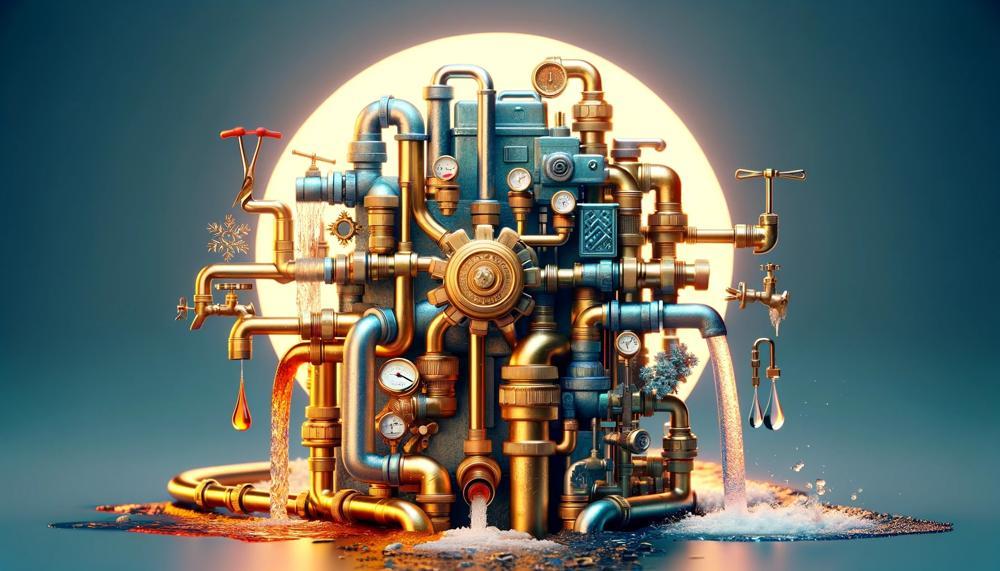
- Local Codes: Always adhere to local building and plumbing codes, which can vary significantly, especially regarding acceptable backflow prevention methods.
- Installation Location: The anti-siphon valve should be installed at the highest point of the water usage system to effectively prevent backflow and ensure optimal function.
- Maintenance Needs: Regular checks are recommended to ensure the valve functions correctly, as debris or wear can impede its effectiveness.
Using an anti-siphon valve is a practical and economical choice for many homeowners looking to protect their water supply from contamination.
Installing a Check Valve
Installing a check valve plays a pivotal role in preventing hot water from backflowing into cold water pipes by ensuring a one-way flow in the plumbing system.
This safeguard keeps the hot and cold water supplies distinct, averting the mixing that leads to temperature inconsistencies and potential contamination.
Check Valve Functionality
A check valve, or non-return valve, allows water to flow in a single direction and closes automatically to prevent the flow from reversing.
This mechanism is vital in preventing the undesirable phenomenon where hot water flows back into the cold water line, causing elevated temperatures in the cold water supply.
Common Causes of Hot-Cold Water Crossover
| Issue | Impact | Solution |
| Faulty Check Valve | Allows backflow of hot water | Replace or repair the valve |
| High Water Pressure | Forces backflow | Install a pressure regulator |
| High Temperature | Creates pressure imbalances | Adjust water heater settings |
Installation Insights
To install a check valve correctly:
- Identify the water flow direction, ensuring the valve’s arrow matches the flow path.
- Shut off the main water supply and drain existing lines to prevent leakage during installation.
- Place the check valve between the hot and cold water lines, using appropriate fittings to secure a tight seal.
- Test the installation for leaks and proper valve operation, confirming that backflow is effectively prevented.
Benefits of Installing a Check Valve
- Prevents Contamination: Keeps the potable water supply free from backflow pollutants.
- Maintains Temperature Integrity: Ensures cold water remains unaffected by hot water lines, crucial for household comfort.
- System Longevity: Reduces wear on appliances and plumbing caused by temperature and pressure fluctuations.
Pressure Regulators as a Possible Solution
Pressure regulators, indeed, stand as a crafty solution to the puzzle of hot water backflow into cold water lines. These ingenious devices ensure a steady, controlled flow, preventing the mingling of temperatures that can spoil our daily water use rituals.
The Mechanics Behind Pressure Regulators
At their core, pressure regulators adjust the water pressure entering your home to a safe level.
This prevents excessive pressure from pushing hot water into places it doesn’t belong, like your cold-water taps. Here’s how they safeguard your water lines:
- Stabilizing Pressure: They maintain a consistent water pressure, ensuring that when high pressure could force hot water back, it is moderated.
- Preventing Backflow: By managing pressure, these regulators indirectly prevent the backflow of hot water into cold lines, maintaining the sanctity of your water temperatures.
Table: How Pressure Regulators Protect Your Water Lines
| Action | Effect on Water Line | Benefit |
| Reduce Incoming Pressure | Decreases risk of backflow | Consistent temperature control |
| Stabilize Pressure Fluctuations | Prevents hot water siphoning into cold lines | Reliable water use experience |
| Adjust to Water Demand | Mitigates risk during high demand | Efficient water system management |
Understanding that a drop in cold water pressure (perhaps due to a shower being turned on elsewhere in the house) might inadvertently invite hot water into cold water lines, these regulators act as vigilant guardians.
They monitor and adapt to changes, ensuring hot water stays on its side of the system, and cold water remains refreshingly cool.
Professional Plumber Assistance
It’s like your plumbing’s playing tricks on you, mixing up your morning shower’s icy wake-up call with an unexpected blast of heat. A professional plumber’s got the know-how to sort this mix-up, pronto.
| Common Culprit | What’s Going On? | Plumber’s Fix |
| Check Valve Mischief | These cheeky valves should stop the backflow, but when they’re on the blink, hot water gatecrashes the cold lines. | Swapping out the faulty valves for shiny new ones gets things back in order. |
| Shutoff Shenanigans | If these valves aren’t lined up right, it’s like they’re rolling out the red carpet for hot water to waltz into cold territory. | A bit of tweaking here, a little adjustment there, and your plumber will have those valves toeing the line. |
| High Pressure Hullabaloo | Too much oomph in your pipes and hot water gets pushy, elbowing its way into the cold lines. | Fitting an expansion valve can show that hot water who’s boss, keeping it in its place. |
| Temperature Tumult | When your water’s hotter than a midsummer’s day in the Sahara, it’s bound to get a bit rebellious. | Installing a tempering cartridge can cool those hot water jets, keeping peace in the pipes. |
| Mixing Valve Muddle | This part’s supposed to keep hot and cold water from crashing each other’s parties, but a malfunction sends the invite anyway. | A new, well-behaved mixing valve can keep the peace between hot and cold water. |
| Broken Dip Tube Drama | This tube’s job is to keep hot water out of cold territory, but when it breaks, it’s like opening the floodgates. | A quick tube replacement by your trusty plumber, and it’s like it never happened. |
Conclusion
Plumbing is more than just pipes and water. It’s a dynamic dance of flow and pressure that keeps our daily lives running smoothly. But sometimes this dance goes wrong—hot water runs back into cold, making drinks that should be cool into warm ones that aren’t welcome. This isn’t just a problem with your morning routine; it’s a sign of bigger problems in the complicated web of home plumbing.
A fine mix of pressure, temperature, and mechanical stability controls how hot and cold water lines talk to each other. Bad check valves, misaligned stop valves, or excessive water pressure can cause hot water to flow in unexpected directions. Setting your water heater to higher temperatures doesn’t help; it turns a possible leak into a likely entry.
Rest assured, we can find a solution to this issue. If you know why they throw these rage tantrums and how to stop them, you can change the situation. It’s not just maintenance to put in expansion valves, change cartridges, and embrace pressure-reducing valves; it’s also a statement of control over your domestic waters. By changing the way your water heater works and giving your lines new life, you can make sure that the water stays exactly where it should be.
Understanding hot water backflow requires more than just learning about plumbing. It’s also a step toward making your house more comfortable and predictable again.
